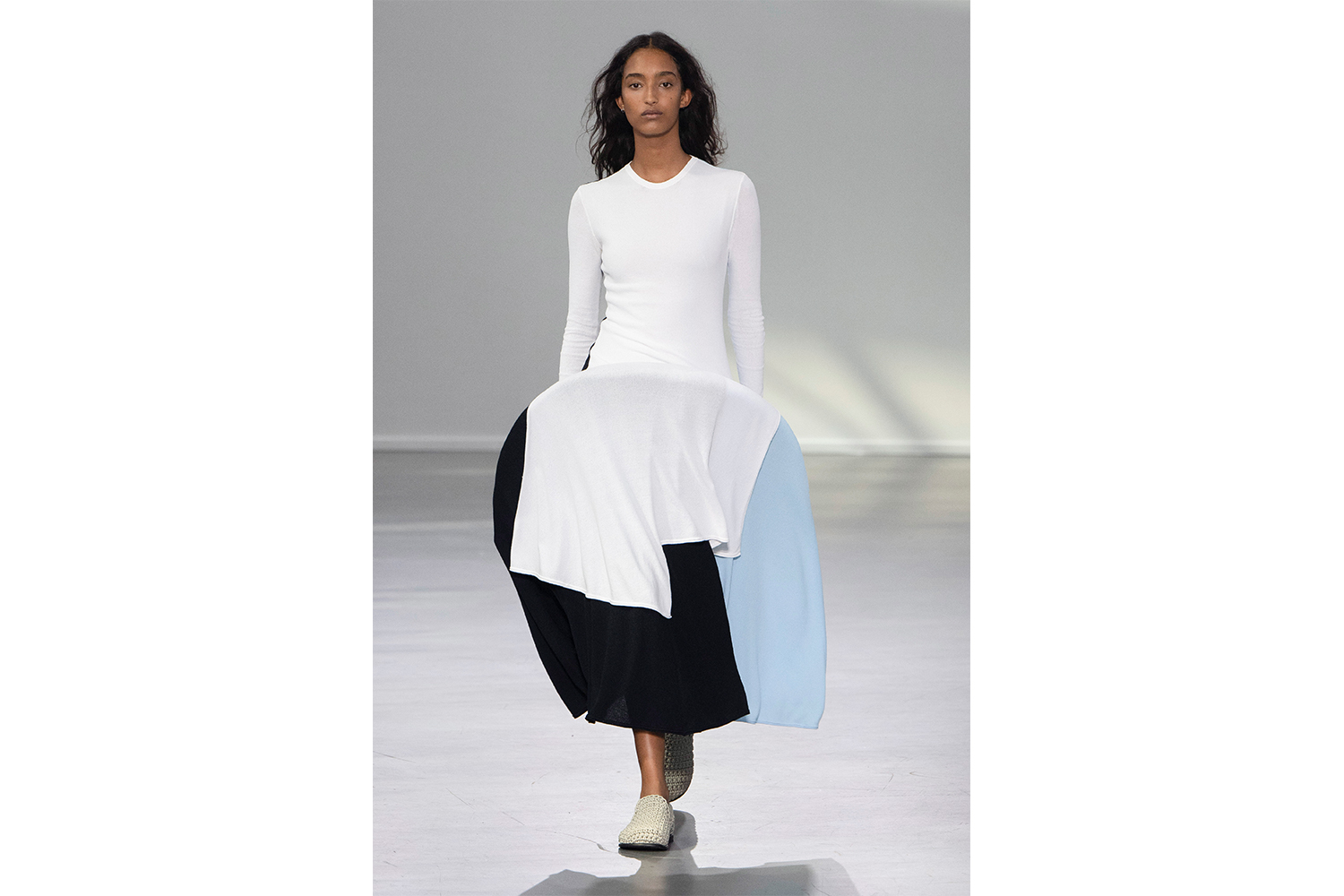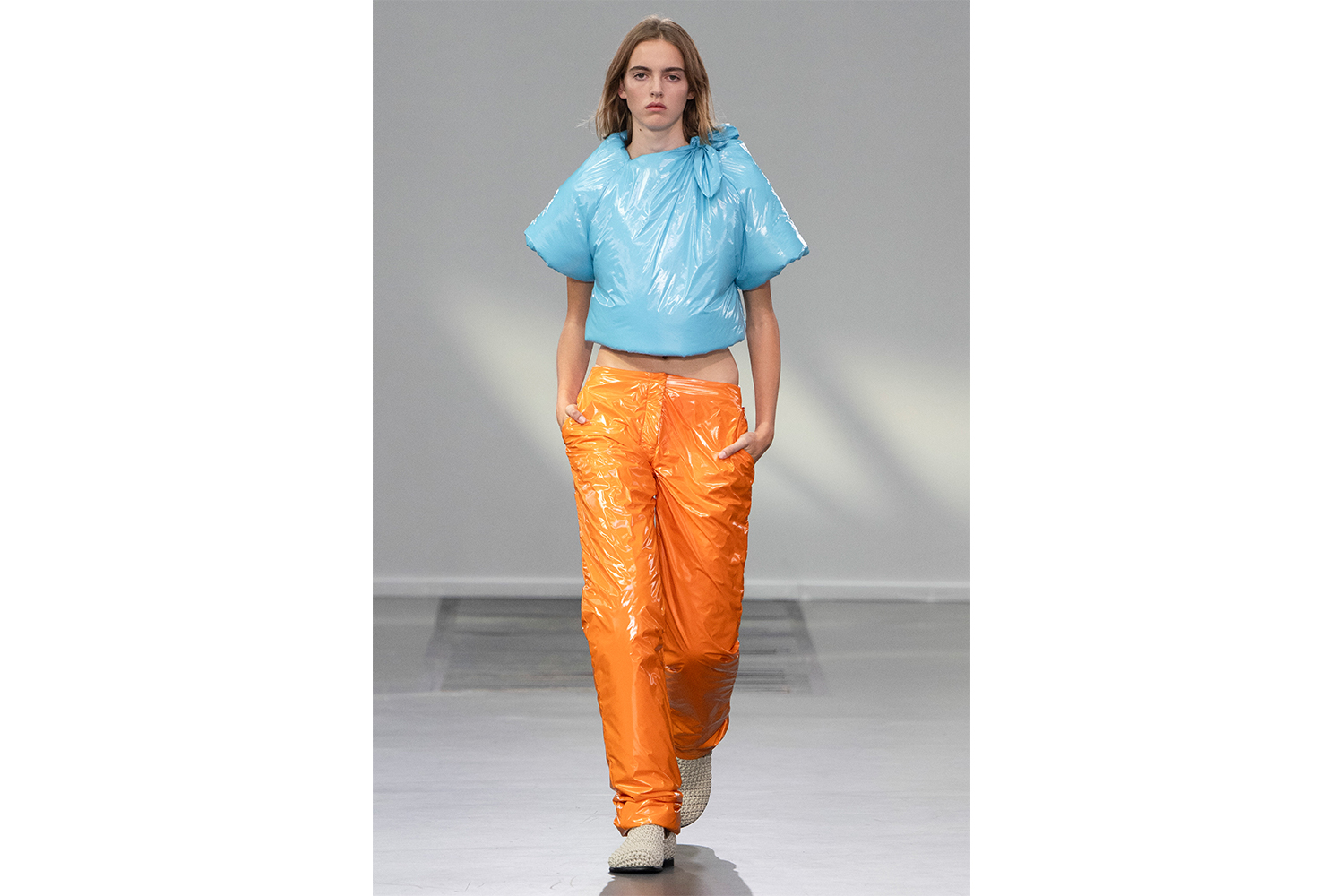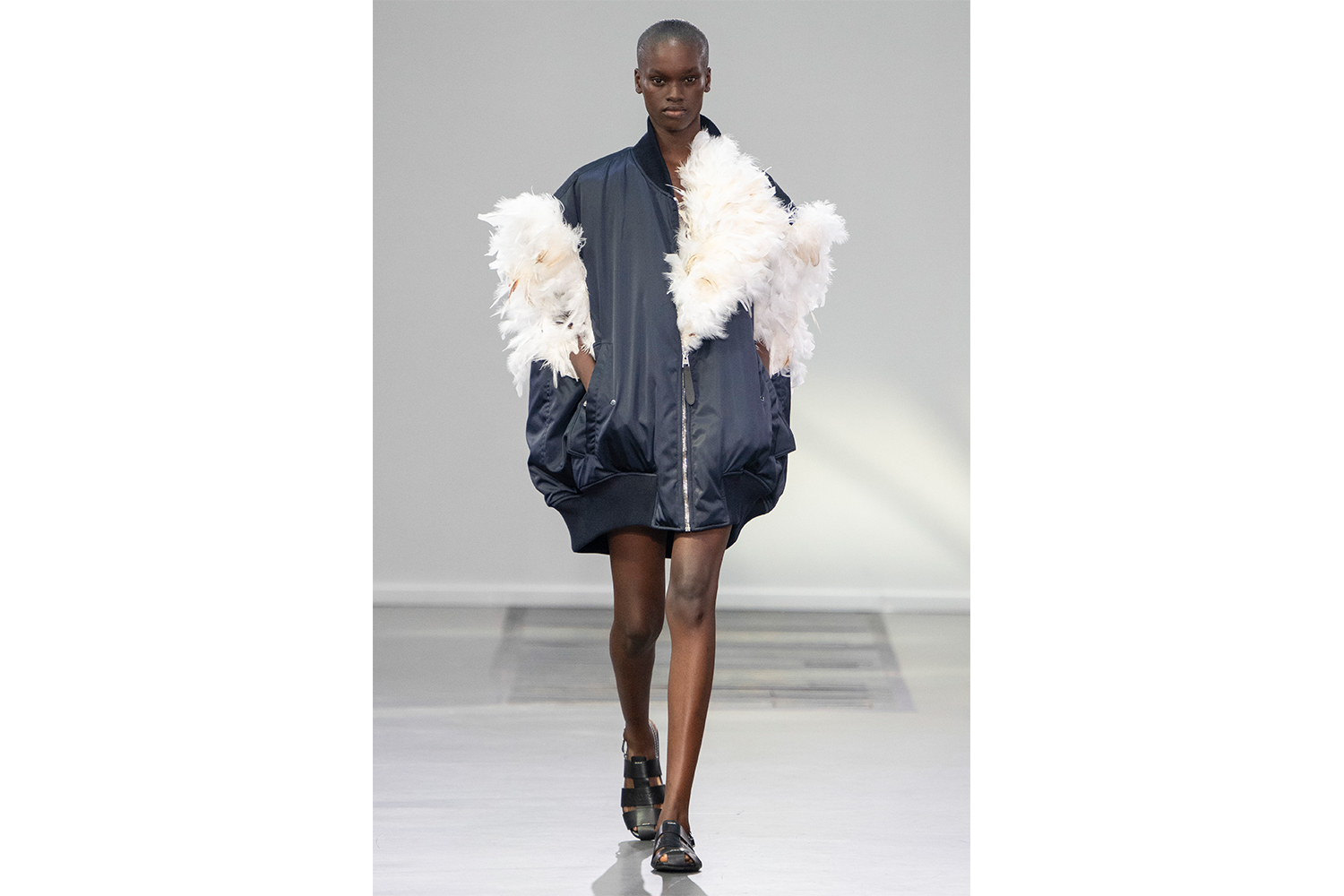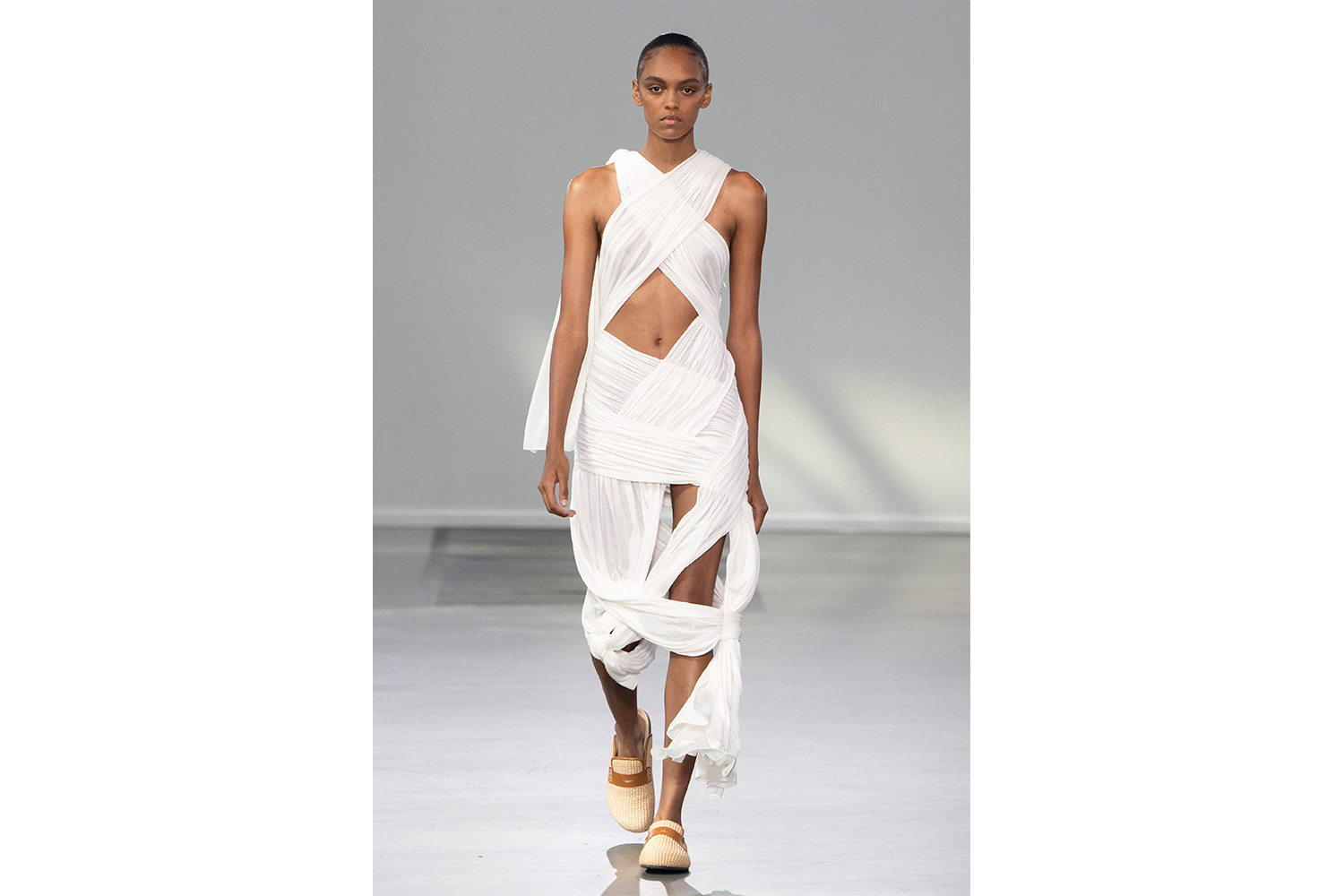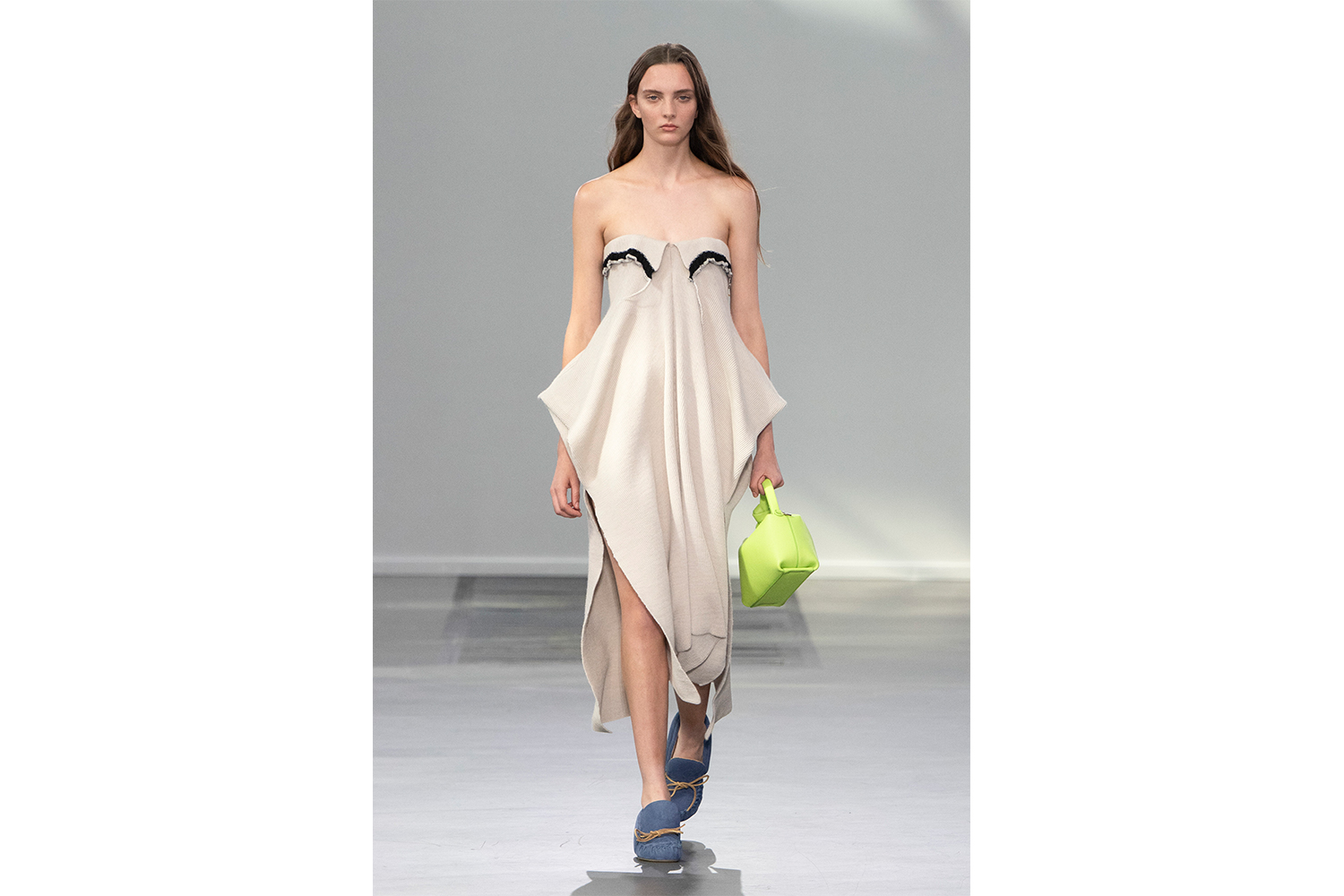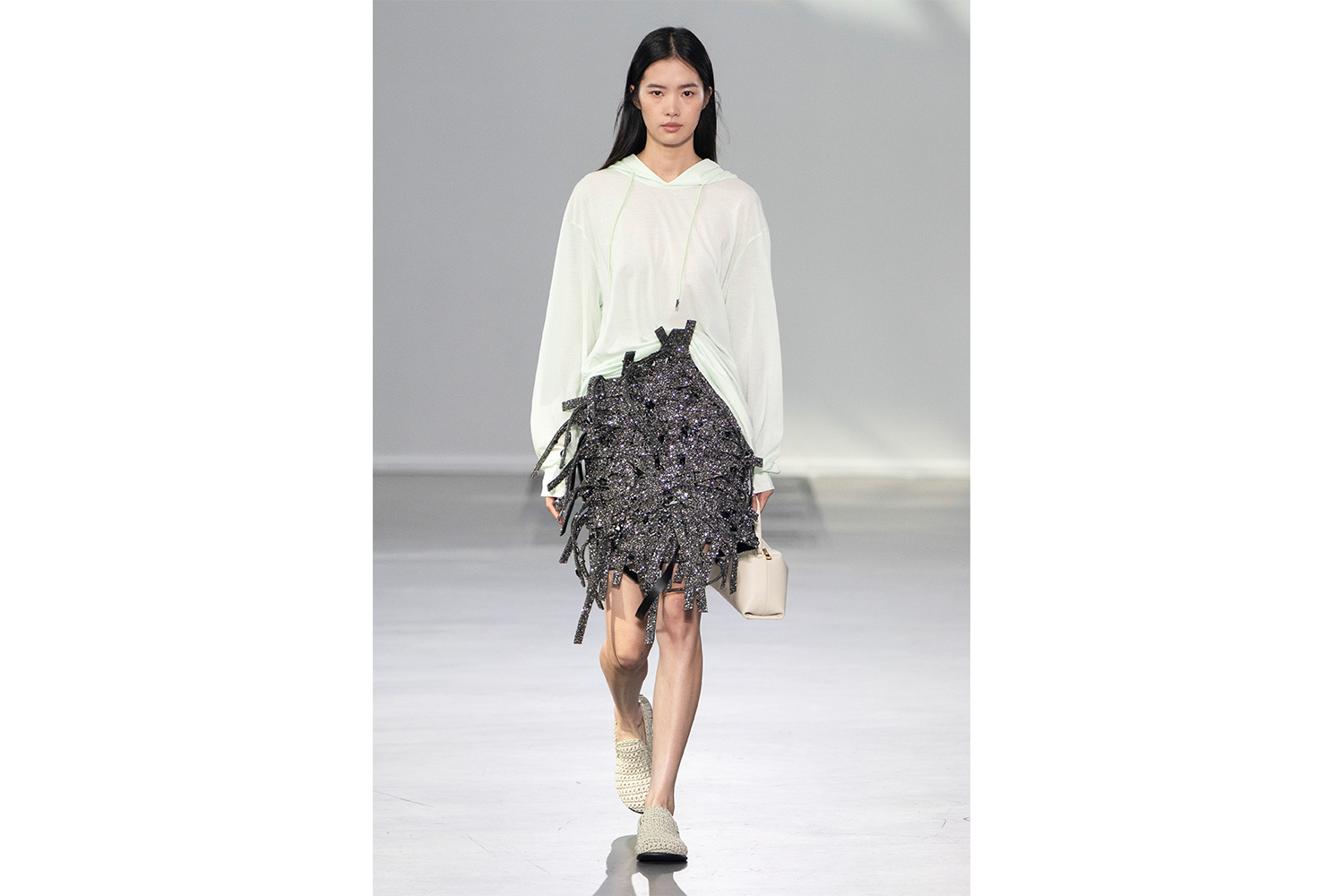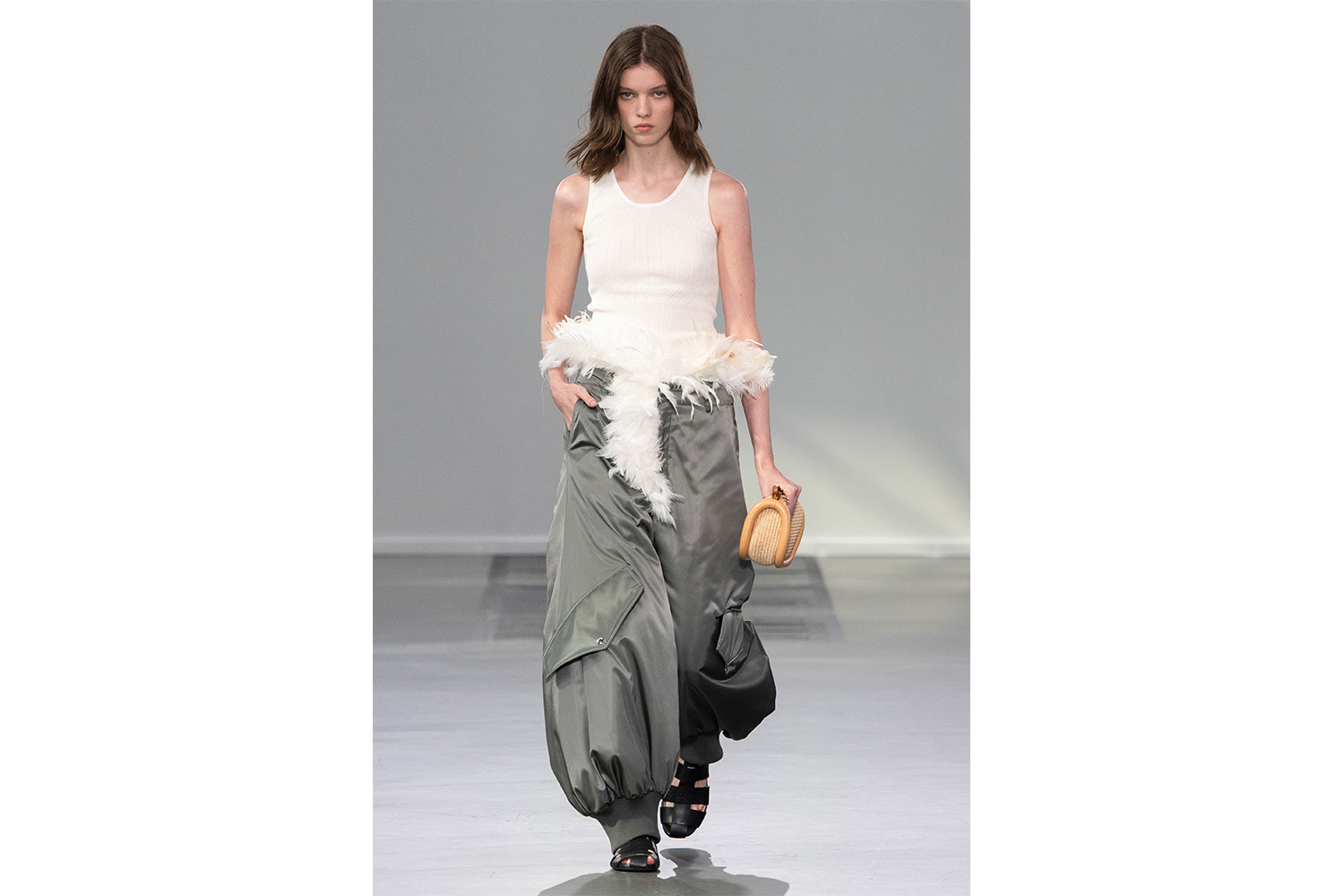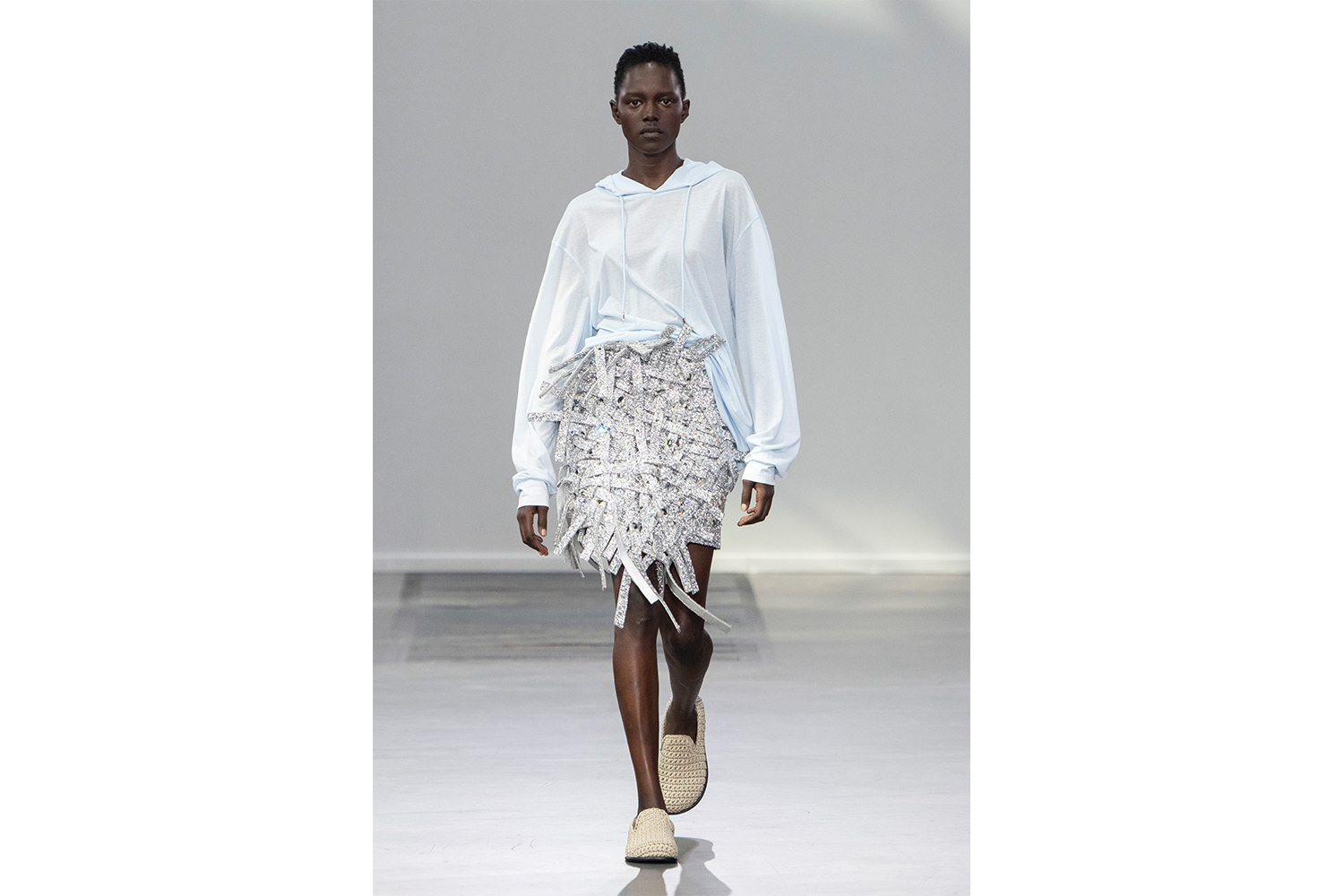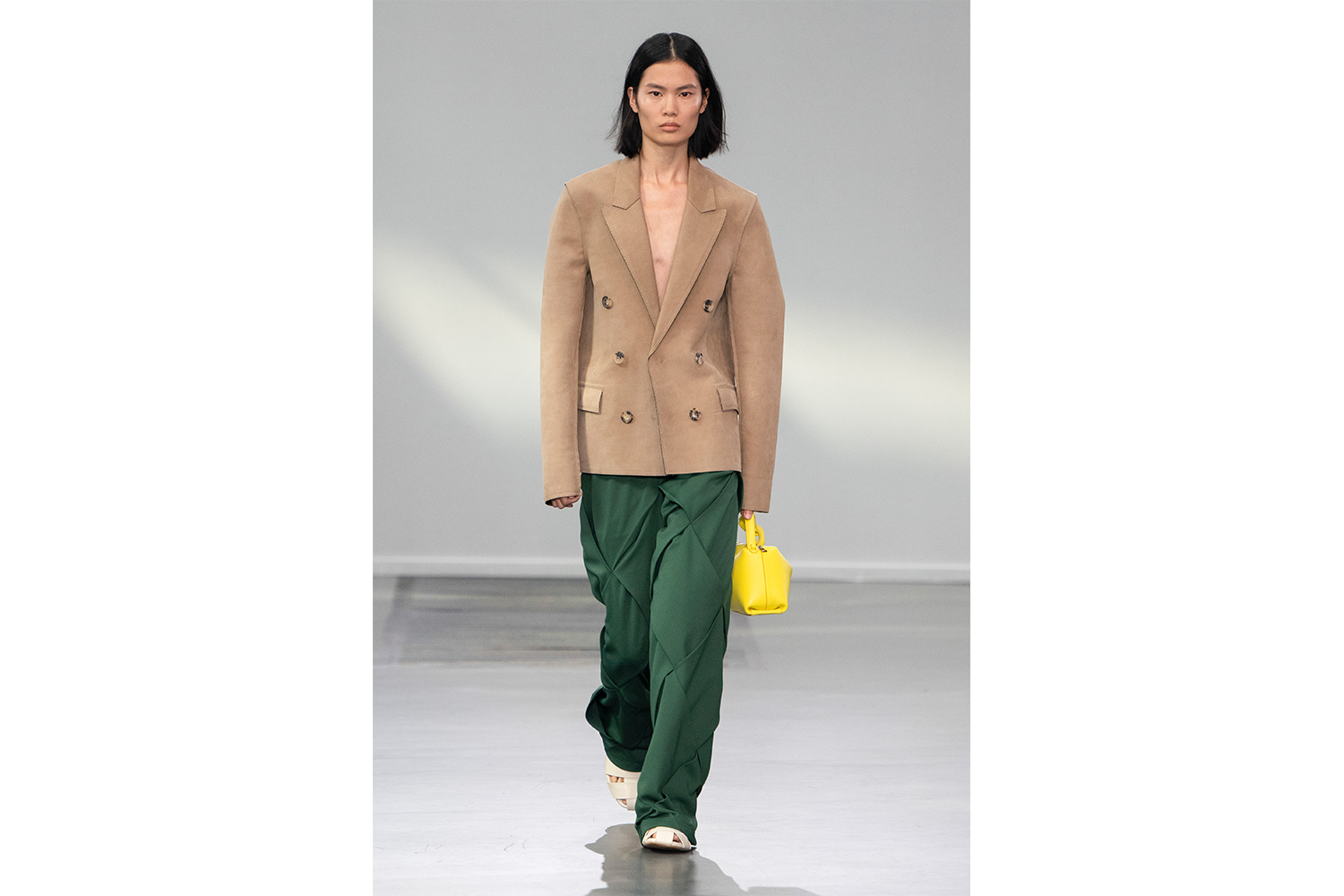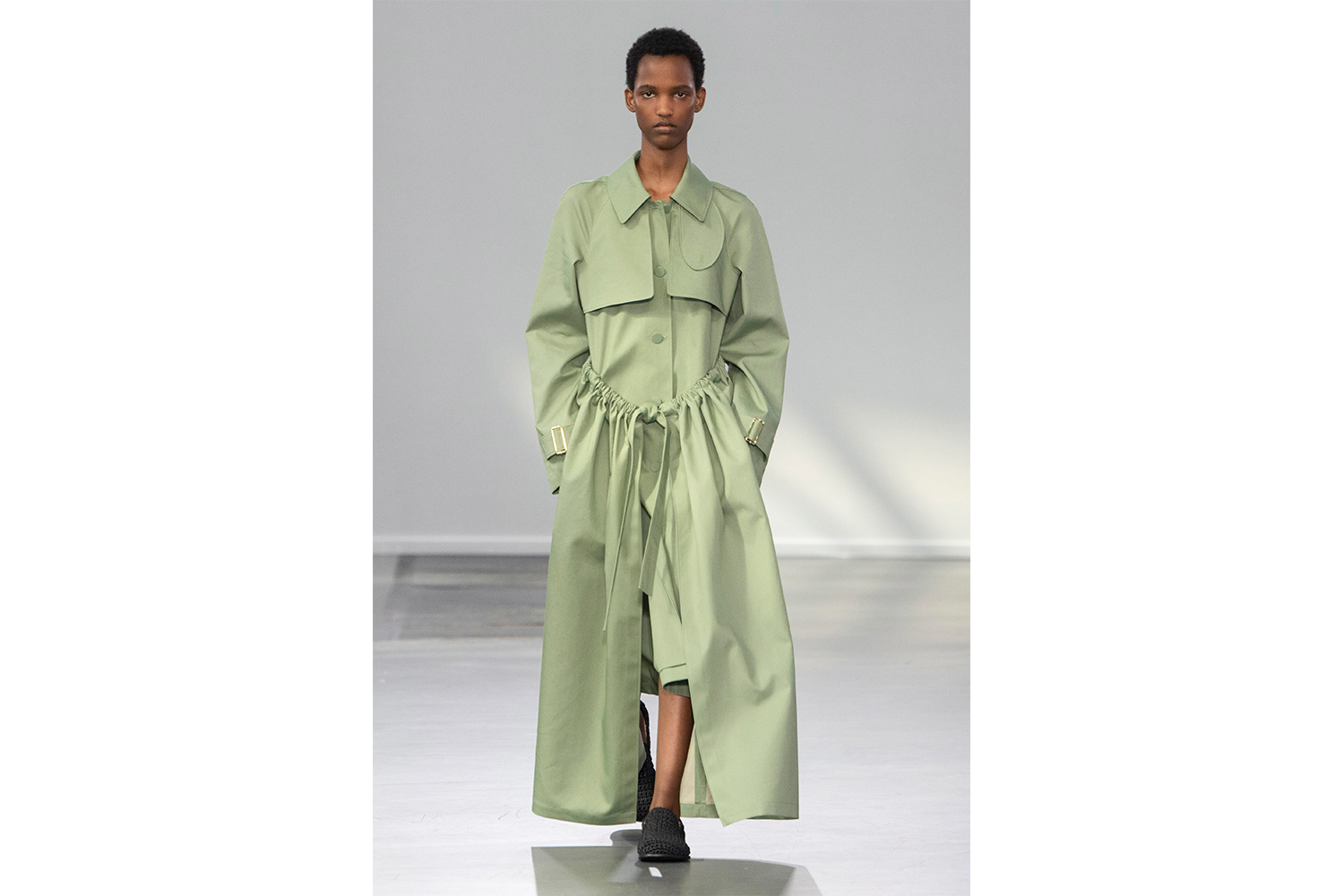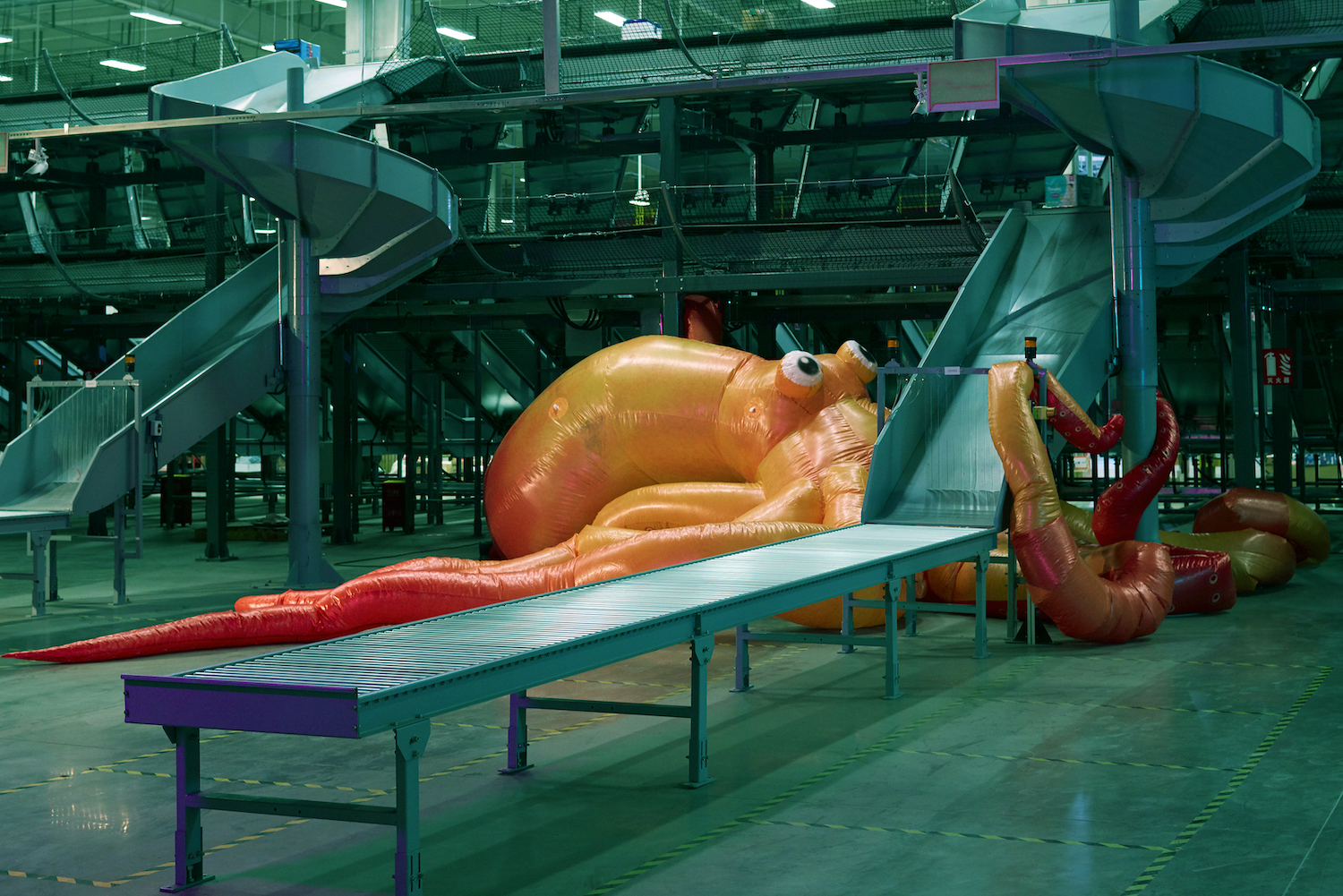I went to see the JW Anderson SS24 show this weekend with a friend. It was great: sweet, sharp, cool. The clothes were hot, feminine, wearable; the music was loud, fun — singalong classics inspired by what Jonathan listens to in his car; the casting was nice. I went with a mate who’s visiting. He’s one of those amazing Canadians who seems to know more about every other country’s culture than we do ourselves and is nice enough not to show off about it. Later, we went to an art show curated by Jonathan at Offer Waterman, featuring his own creations for his brand and Loewe, in dialogue with other, older artists. Then there was a party at the Groucho Club, a members’ spot in Soho, best known for being the place the YBAs and other Cool Britannia types would fall out of, also thrown by Jonathan.
The first, the fashion show, looked at play: the invite came wrapped around a block of modeling clay that every schoolchild in the UK messed about with in year three art class, and is still manufactured in Northern Ireland, where Jonathan grew up. The opening look was a hoodie and shorts, looking like they were made out of hand-pressed clay (and indeed they were — or at least a 3-D printed version of the models made by Jonathan). There were whole looks made out of brightly colored plastic, sleeveless bomber jackets with feathers erupting out of them, alongside crocheted shoes and dresses: kitchen-table play, experimentation via reduction, the industrial and the handmade, a complex theme coherently expressed. As striking, if not more, were the singular, unbelievably sellable pieces — leather motorbike jackets with inbuilt hoods and contrasting pulls. London is, bizarrely, full of designers with a high level of angst about reconciling the commercial and the experimental. It’s a strange sickness for a town that is otherwise intensely relaxed about becoming filthy rich, and yet always strives to sell itself on creativity. It seems like it has never really affected JW Anderson. Or, rather, it’s the very reconciling of these two poles, and the realization that they are twin imposters, that has always marked JW Anderson apart as a brand, and Jonathan as a designer. The singularity of a show piece is a motor of attention: an idea made form in the shape of a shoe that flies off the shelf is a conceptually fascinating idea. It’s a very London form of genius.
The art show was even more explicitly London-oriented. Based on a walk around London, and situated in William Morris’s old London house, the show moves through five areas: the crowd; the playground; the pigeons (!); the flowerbed; and the pub. Big lads like Lowry, Frank Auerbach, and David Hockney; amazing modernists like Sybil Andrews and Claude Flight; awesome current artists like Lynette Yiadom-Boakye, Pol Anglada, Florian Krewer, and Richard Hawkins; and lots of craftspeople and ceramicists like Akiko Hirai, Magdalene Odundo, and Hans Coper. In the pub room at the end, it’s a bunch of portraits arranged in a circle, individuals together and sitting alone, thinking and not thinking, talking and not talking, sharing space and time. A country, a place.
We Brits are a funny bunch: we think we’re special. Whenever visitors say they love the UK, I’m always a bit surprised. “We’re a deeply unserious land; ruled by the worst political party in Europe; in terminal economic decline. We lock up migrants on barges and it rains all the time,” I say. People rarely know what to say. Maybe it’s a bit weird to go on about it: a bit like yelling at a well-wisher at your grandma’s funeral, because she lost it in her old age. Or like when you compliment someone whose parent is an artist you like, and then they go on about how actually dreadful they were as a caregiver. You kind of nod and look sympathetic, but really you’re just thinking, “Mate, I just liked some of his songs. I didn’t actually need a bloody rundown of his life.”
A happy child overestimates the importance of their parents, as does a furious adolescent. An adult, or an outsider, can at least attempt to see them for what they are. One of my favorite quotes is by the great historian of Germany Fritz Stern, who described Germany’s postwar state: “Freed from the obligation to be a Great Nation, Germany could instead be a good country.” On the way to the show, I read an editorial by Simon Kuper in the FT, on Britain perhaps finally coming terms with itself, honestly, after Brexit. Realizing its place as a normal, mid-sized state, with some past glories and some present cruelties, weather that’s changeable but not unendurable, decent people but no better than elsewhere.
The reason I mention this is because Britishness felt at the heart of JW Anderson’s three activities during fashion week. Yet they felt lighter than any other point of engagement with the meaning of Britishness could have been for the last seven years, if not longer. Even if the final party was a nod to Cool Britannia, there was no real exceptionalism throughout. But there was beautiful art and beautiful clothes, made in a place that is not anywhere, and deserving of celebration anywhere, anyway.

